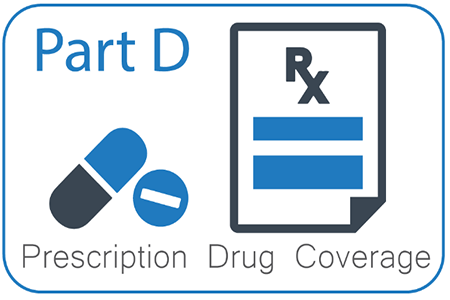
Prescription Drug Plans (Medicare Part D)
Eligibility
- Beneficiaries must be eligible for Part A and/or enrolled in Part B
- Beneficiaries must live in the plan’s service area
- Plans must enroll all eligible beneficiaries regardless of health status. (Except: in limited circumstances with MAPD and SNP plans)
When beneficiaries opt for Original Medicare, they often select a Medigap policy to help cover medical costs and a stand-alone PDP plan to defray prescription drug costs. Choosing a PDP is voluntary, however, if a plan is not selected when first eligible for Medicare insurance, a lifetime penalty is levied by Medicare
When a Medicare Advantage Plan with Drugs is selected, the prescription plan is embedded in one policy that covers Medicare Part A, Part B and Part D. The characteristics of either choice are identical. The component parts are:
- A deductible. (A plan may or may not have a deductible up to the Medicare defined maximum.)
- Initial Phase. Costs are shared between beneficiary and company
- Gap Phase (Donut hole). Cost shares change
- Catastrophic Phase. Copays for drugs are very inexpensive
Note: Annually, Medicare dictates the deductible maximum, when each phase begins, and the copay amounts and/or percentages - When selecting a PDP plan, one should consider premiums, cost sharing, formulary, network pharmacies and other factors
- Extra help for low income beneficiaries is available
- Beneficiaries with income higher than $85,000 (individual) or $170,000 (couple) pay a higher Part D premium
- Plan coverage is provided through network pharmacies. (Varies by plan.)
- Plans must meet the Medicare standard coverage
- Some plans include enhanced coverage for an additional monthly premium

